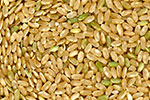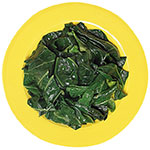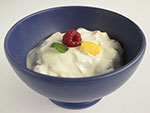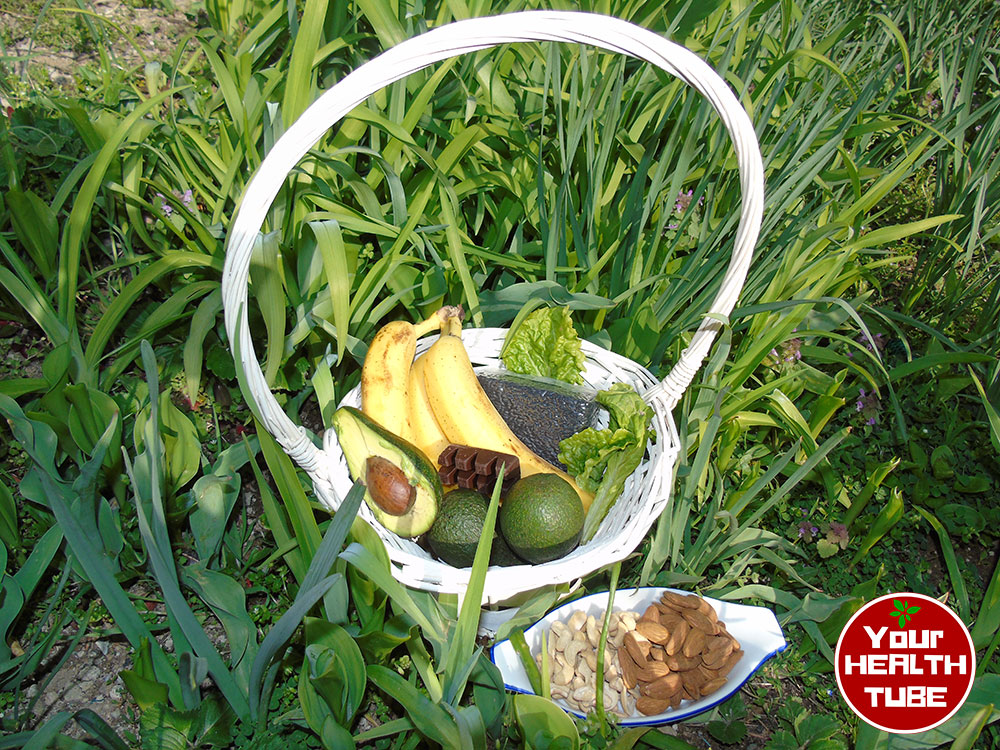Magnesium deficiency (hypo-magnesia) or low magnesium refers to poor magnesium intake or impaired magnesium absorption that can result in numerous health conditions.
Magnesium is a mineral that is responsible for a huge number of bodily processes. This amazing anti-inflammatory mineral is offering great protection against many diseases such as Alzheimer’s disease, arthritis, high blood pressure, respiratory issues, diabetes and much more.
Magnesium deficiency Symptoms
Upping magnesium intake can solve various health problems, but magnesium deficiency can lead to many of those same problems. A poor diet and a stressful lifestyle may lead to magnesium deficiencies.
Here are the most common symptoms of magnesium deficiency:
- Weakness
- Nausea
- Anxiety
- Muscle cramps
- Tremors
- Insomnia
- Backaches
- Frequent headaches
- Dizziness
- Fatigue
- High blood pressure
- Difficulty swallowing
- Confusion
- Poor memory
- Respiratory problems
- Poor Heart health
- Type 2 diabetes
- Osteoporosis
- Calcium deficiency
- Potassium deficiency
Note: If you experience any of the above symptoms that don’t necessarily mean you are 100% deficient in magnesium. However, you need to consult your doctor if you have some of these issues.
The Function of Magnesium Function in Our Body
This remarkable mineral plays many roles in our body, including:
- Increases calcium bioactivities
- Gives flexibility to the bones
- Promotes good sleep
- Regulates blood pressure
- Eases muscle cramps
- Decreases insulin resistance
- Prevents congestive heart failure and stroke
- Increases circulation
- Relieves chronic pain
- Eliminates headaches
- Aids make proteins
- Supports proper elimination
- Treats asthma
- Prevents osteoporosis
- Lowers triglycerides and serum cholesterol levels
Calcium – Magnesium Ratio 10:4
Magnesium is actually a key to our vitality and overall health. It is involved in more than 300 hormone reactions. Magnesium is also necessary for a proper calcium transportation thru cell membranes because calcium needs other nutrients (silica, vitamin K, vitamin D, and of course, magnesium) to get into bone matter. That’s the main reason why the calcium-magnesium ratio is truly important. An ideal calcium-magnesium ratio is 10:4.
10 Super-Magnesium-Foods
Diet and lifestyle have a great influence in your magnesium intake. The simplest and easiest way to increase your magnesium intake is to eat magnesium rich foods. Here are the richest magnesium foods that you can consume:
- Seeds: Pumpkin Seeds, Flax Seeds, Sunflower Seeds
Pumpkin seeds are full of magnesium. Only ½ a cup of toasted pumpkin seeds contains 92% of our daily value of magnesium. This portion full of magnesium will relax your muscles and nerves, help with circulation, and strengthen your bones.
Flax seeds are high magnesium food. Just 80 grams of flax seeds provide 360 mg of magnesium, which is a recommended daily dose. These seeds are also very high in B6 and manganese that makes them a perfect combination for reducing stress, eliminating migraine headaches, reducing chronic pain, and improving good sleep.
Sunflower seeds are also a good source of magnesium. A handful of sunflower seeds will enhance your health by supplying great amounts of vitamin B6, C, and E, iron, and magnesium. 100 grams of sunflower seeds contain 325 mg of magnesium.
- Black Beans
 Black beans are really beneficial for everyone. They are an affordable source of fiber, protein, antioxidants, and numerous minerals and vitamins. Black beans provide 73 % of the daily value of magnesium. People who have magnesium deficiency should include more black beans in their diet.
Black beans are really beneficial for everyone. They are an affordable source of fiber, protein, antioxidants, and numerous minerals and vitamins. Black beans provide 73 % of the daily value of magnesium. People who have magnesium deficiency should include more black beans in their diet.
- Brown Rice

Your Health Tube- food ranking system qualified this rice as an exceptional source of manganese, and a great source of magnesium, selenium, copper, phosphorus and many other vitamins, and minerals. Just 1 cup of brown rice will provide you the recommended daily amount of magnesium.
- Cooked Spinach
 Your Health Tubers suggest cooking your vegetables every time you can because cooking increases the amounts of magnesium. Only ½ of cooked spinach contains 78 mg of magnesium. Boiled spinach is also very rich in calcium. Raw spinach is still good for you because it contains great amounts of vitamins B6, E and K, iron, zinc, riboflavin, and potassium.
Your Health Tubers suggest cooking your vegetables every time you can because cooking increases the amounts of magnesium. Only ½ of cooked spinach contains 78 mg of magnesium. Boiled spinach is also very rich in calcium. Raw spinach is still good for you because it contains great amounts of vitamins B6, E and K, iron, zinc, riboflavin, and potassium.
The easiest way to cook spinach is to heat 1 tablespoon of olive oil in a large skillet over medium heat. Put the washed spinach in the skillet and cover it. Allow to cook for about 5 minutes. Then, toss it with some garlic, black pepper, and salt and cover again for additional 5 minutes. In the end, remove from heat, and sprinkle with 1-2 tablespoons of Parmesan cheese. Bon appetite!
- Nuts: Almonds and cashews

Almonds are very low in saturated fat. They contain many protective nutrients, zinc, phosphorus, magnesium and calcium for strong bones, vitamin E for healthy heart and cancer prevention. Just 100 grams of almonds contain 268 mg of magnesium, which is a solid 67% of the daily recommended dose.
Cashews are the great mineral source, they contain 23% of the daily recommended value for manganese and 31% for copper. These nuts have even more magnesium than almonds or 100 grams of cashews contain 292 mg of magnesium. They are also an amazing source of vitamin E.
- Fish
 In addition to being incredible sources of omega-3 fatty acids and vitamin D, fish like halibut, wild salmon, tuna, and mackerel can add extra magnesium to your menu. You should have fish for lunch 1-2 times per week.
In addition to being incredible sources of omega-3 fatty acids and vitamin D, fish like halibut, wild salmon, tuna, and mackerel can add extra magnesium to your menu. You should have fish for lunch 1-2 times per week.
- Dark Chocolate

Dark chocolate is delicious dessert and magnesium- booster. Only one square of dark chocolate provides 24% of the daily value of magnesium for just 145 calories. This strong chocolate will help you improve blood flow, lower blood pressure, and improve overall cardiovascular health.
- Banana
Bananas are best known for being rich in bone-strengthening and heart-healthy potassium, but one medium banana provides 32 mg of magnesium, along with fiber and vitamin C. It has only 100 calories and can be a super portable breakfast or to-go snack. You can also make a fruit salad and boost your metabolism with extra magnesium by adding strawberries, grapefruit, figs, and blackberries.
- Avocado

This powerful food is loaded with heart-healthy nutrients, multivitamins, and illness-thwarting chemical compounds. Add 1 sliced avocado to your smoothies, salads, or sandwiches, and you will easily consume about 15 % (or 42 mg) of the recommended daily amount of magnesium.
- Probiotics: Low-Fat Yogurt
 Low-fat (or no-fat) yogurt is an amazing source of calcium and magnesium, and the easiest way for your body to absorb the calcium. Only one container of low-fat yogurt contains 19 mg of magnesium, which make it an ideal breakfast choice.
Low-fat (or no-fat) yogurt is an amazing source of calcium and magnesium, and the easiest way for your body to absorb the calcium. Only one container of low-fat yogurt contains 19 mg of magnesium, which make it an ideal breakfast choice.
Conclusion:
Magnesium is a brilliant mineral and imperative for healthiness.
Natural food is the best way to take magnesium. Reverse your magnesium deficiency by consuming cooked green vegetables, pumpkin, flax and sunflower seeds, fish, bananas, avocado, dark chocolate, probiotics as low-fat yogurt, and many other fermented foods and beverages. You need to avoid refined and processed foods.
A magnesium supplement can be also used by both, children and adults to boost magnesium intake and ease constipation.

